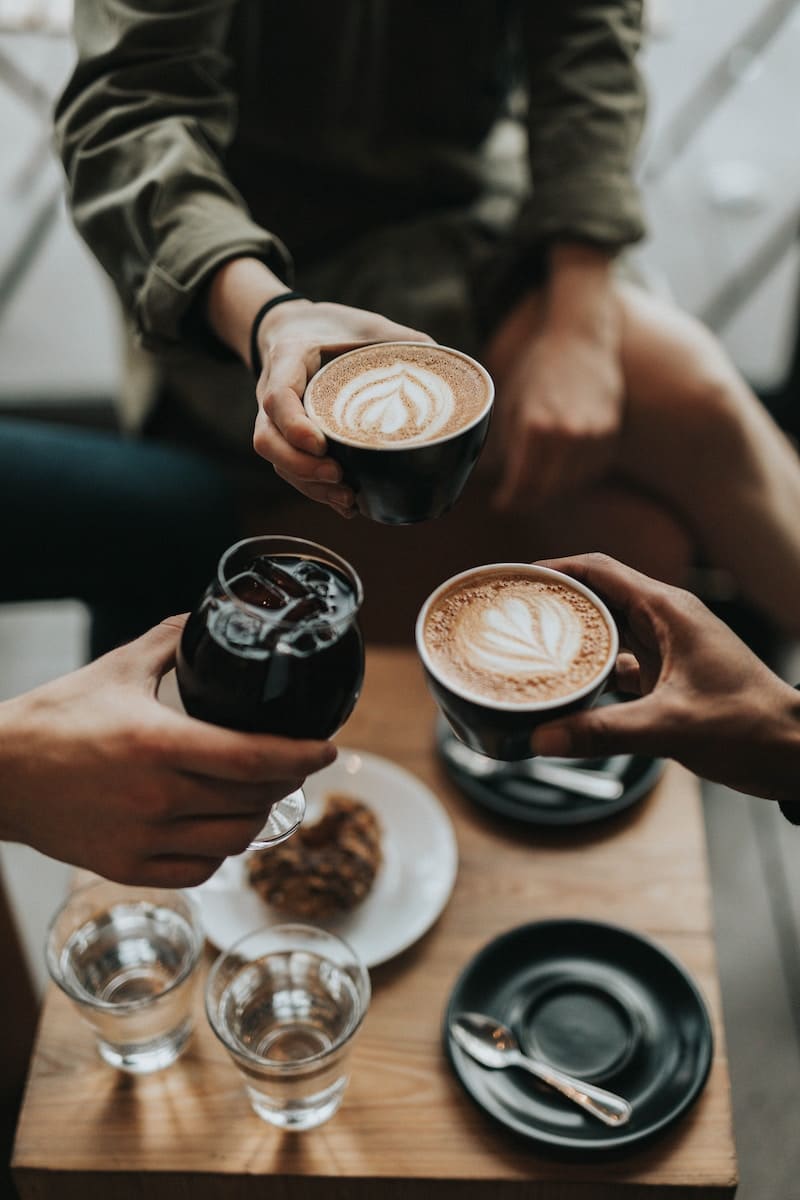Home barista: mastering the art of coffee making at home

Becoming your own barista may seem like a daunting task. However, with the right knowledge and tools, you can master the art of making the perfect cup of coffee, right in the comfort of your own home. From understanding the nuances of coffee beans to mastering the extraction process, this article serves as a comprehensive guide to home brewing.
The art of selecting coffee beans
The first step on your journey to becoming a home barista is the selection of coffee beans. The quality of your beans will directly affect the flavour of your coffee. While the process might seem overwhelming initially, with a little guidance, you can make an informed choice.
Avez-vous vu cela : Creating a home dance studio: bringing movement into your life
Coffee beans come in countless varieties, each with its distinct taste, aroma, and texture. The two most common types are Arabica and Robusta. Arabica beans are often described as sweet and soft, with a taste that’s reminiscent of sugar, fruit, and berries. Robusta, on the other hand, has a strong, robust flavour and a grainy texture.
You can select your beans based on the flavour profile you prefer. However, remember to always opt for freshly roasted beans. Fresh beans ensure the highest quality of flavour and aroma.
Dans le meme genre : What are the essential elements of a home emergency kit?
Understanding the importance of grind size
Once you’ve selected your beans, the next step is grinding them. The size of your grind can significantly affect the taste of your coffee. It’s a delicate balancing act – grind your beans too coarse, and you risk a weak, under-extracted brew; too fine, and you may end up with a bitter, over-extracted one.
For a standard, automatic drip coffee maker, a medium grind (about the consistency of sand) is typically best. If you’re making an espresso, you should opt for a fine grind. For a French press, a coarse grind is ideal. It’s worth investing in a good quality burr grinder, which will give you consistent grind sizes.
The art of brewing
Brewing is where the magic happens. It’s the process where the flavors and aromas of the coffee beans are extracted to create your perfect cup of coffee.
The brewing method you choose can dramatically influence the taste and flavour of your coffee. The most popular methods include the French press, pour-over, and espresso machine. Each method requires a different grind size and brewing time for optimal extraction.
For instance, a French press requires a coarse grind and a brewing time of about four minutes. A pour-over needs a medium-fine grind and a brewing time of two to three minutes. An espresso machine requires a fine grind and a brewing time of 20 to 30 seconds. Experimenting with different brewing methods can help you discover your ideal cup of coffee.
The role of water in coffee making
Water makes up about 98% of your cup of coffee, making it a crucial component in the brewing process. The quality and temperature of the water can significantly affect the taste of your coffee.
Ensure that the water you’re using is clean and fresh. Filtered water is often the best choice as it’s free from impurities that could alter the taste of your brew.
The temperature of the water is equally important. The optimal temperature for brewing the majority of coffee is between 195 to 205 degrees Fahrenheit. Water that is too hot can over-extract the coffee, leading to a bitter taste. On the other hand, water that is too cool can under-extract the coffee, causing it to taste weak.
Mastering espresso making
Espresso serves as the base for many popular coffee drinks like lattes, cappuccinos, and mochas. Mastering the art of making the perfect espresso is a skill that will elevate your coffee making game.
Making an espresso involves forcing hot, pressurised water through finely ground coffee. This method of brewing brings out the rich flavours and aromas of the coffee beans and creates a concentrated, full-bodied brew.
To make the perfect espresso, follow these steps:
- Choose quality, fresh beans and grind them finely just before brewing.
- Measure the right amount of coffee. A good starting point is 18-20 grams for a double shot.
- Tamp your coffee grounds evenly in the portafilter.
- Brew your espresso. The optimal extraction time is between 20-30 seconds.
- Monitor the flow of coffee. It should look like a ‘mouse tail’ – a steady, even stream.
Adding milk to your coffee
The addition of milk can transform your cup of coffee, adding a creamy, rich texture and a slightly sweet taste. Whether you’re making a latte, cappuccino, or a flat white, the key to a great milk-based coffee is properly steamed and frothed milk.
The process of steaming and frothing involves heating the milk and creating a microfoam on the surface. This foam adds a velvety texture to the coffee and helps balance its acidity.
To steam and froth milk like a pro, follow these steps:
- Start with cold, fresh milk. Whole milk works best due to its high fat content.
- Pour the milk into a frothing pitcher. Don’t fill it more than half-way, as the milk will expand as it’s heated.
- Submerge the steam wand in the milk and turn it on. Keep the wand near the surface to create froth.
- Stop steaming when the milk reaches a temperature of 150 to 155 degrees Fahrenheit.
- Swirl the milk in the pitcher to break up any large bubbles and create a smooth microfoam.
Remember, practice makes perfect. So don’t worry if your first few attempts don’t go as planned. With patience and persistence, you’ll be brewing coffee like a pro in no time. Enjoy the process and, most importantly, the delicious results.
Fine-tuning your coffee experience: The power of latte art
One of the most exciting aspects of being your own home barista is being able to experiment and add a personal touch to your coffee. Latte art is a fun and creative way to do exactly that. It refers to the design made on the surface of a latte, often in the form of rosettes, hearts, or other intricate patterns.
Latte art is not just about aesthetics. It’s a testament to the quality of the espresso shot and the steamed milk. To create beautiful latte art, both the espresso and milk need to be prepared perfectly.
The first step is to brew a high-quality espresso shot. Use an espresso machine and follow the steps mentioned earlier. After brewing the espresso, steam the milk until it reaches a temperature of 150 to 155 degrees Fahrenheit and develops a smooth microfoam.
To pour the latte art, start by holding the cup at a slight angle. Pour the steamed milk in the center of the cup, while moving the pitcher in a smooth, continuous motion. As the foam rises to the surface, it will create a pattern.
Perfecting latte art takes time and practice. But the joy of creating your own designs and the satisfaction of drinking a beautiful cup of coffee make it a skill worth mastering.
Cold brew: A different approach to coffee brewing
While hot brewing methods are common, cold brew is an excellent alternative for those hot summer days. Cold brew coffee is known for its smooth, rich flavor and lower acidity.
In this method, coffee grounds are steeped in cold water for a long period, usually 12 to 24 hours. This slow extraction process results in a coffee concentrate that can be diluted with water or milk and served over ice.
The grind size for cold brew coffee should be coarse, similar to that of a French press. However, the coffee-to-water ratio is higher in cold brew. A typical ratio is 1:4 or 1:5, coffee to water.
One of the advantages of cold brew is that it can be prepared in large batches and stored in the refrigerator for up to two weeks. It’s a convenient and refreshing way to enjoy your coffee, particularly on those hot, lazy summer afternoons.
Conclusion: Your journey as a home barista
Mastering the art of coffee making at home is an exciting journey. It requires patience, practice and a willingness to experiment. Being a home barista is about more than just making a cup of coffee. It’s about understanding the complexities of coffee beans, the importance of grind size, the magic of coffee brewing, and the beauty of latte art.
When you brew your own coffee, you have the freedom to tailor each cup to your taste and mood. Whether you prefer a strong espresso or a creamy latte, a hot cup of French press coffee or a refreshing cold brew, being a home barista allows you to create your own perfect cup.
Remember, it’s not just about the destination but the journey. Enjoy each step of the coffee making process, from selecting the beans to sipping your perfectly brewed coffee. The most important part of being a home barista is to enjoy the experience. Here’s to many happy coffee brewing days ahead!
